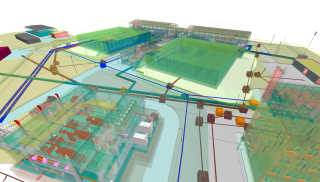

Back to the Basics of Precision Agriculture
Precision agriculture is a science that involves the improvement of crop yields and the assistance of management decisions through the use of great technological sensors and tools. Precision agriculture involves adopting a new concept to help improve productivity, reduce labour time, and ensure effective management (Bucci et al, 2018). Its main goal is to use technology and the agricultural industry to compare crop inputs in small and large farm areas. This kind of farming is different from the traditional type of agriculture since it comprises a farming management system that makes it easier to manage the whole-farm unit. Agriculture is seen to be viable since it has both economic and environmental benefits. Precision agriculture gives its farmers the ability to program and make things easier in collecting and examining materials.
The Process of Precision Agriculture
It involves a cyclic process to enable farmers to work it out. Farmers can start by site-seeing, which involves sitting a specific mode of farming they are comfortable with. Farmers are needed to perform annual preparation, collection of data, and analysis steps to allow them to complete the precision process (Bucci et al, 2018). Farmers are to perform soil testing and analyse data to determine spatial variations in various planting methods. When planting begins, the farmers test the soil to identify the fertilizers used. Crop scouting is also done to search for weeds, pests, and diseases; further, through variable rate application, treatments to be used are identified. During the harvesting period, the harvested crops are analyzed to allow the farmer to track the progress of the plant yields compared with the previous yields. This will help determine the changes to be included in the coming season.
Precision Agriculture: Tools and Methods
Precision agriculture involves methods and tools to make farming beneficial to farmers. Lab testing involves soil testing for the nutrients present in soil like nitrogen, potassium, and phosphorus. Programmed planting equipment allows for variable seed rate delivery and effectiveness during farming. Grid soil sampling and (VRT) application allows crop advisors to recommend fertilizers to be used compared to the soil sampled (Mikula et al, 2020). The samples are used to plot a fertilizer application map. It is therefore added to the computer on a variable-rate fertilizer spreader. Through the map and the GPS receiver, the computer directs the product delivery controller to change the type and amount of fertilizer used.
Global Positioning System satellites show indicators allowing GPS receivers to calculate their position. GPS receivers help offer the specific location of the soil to be mapped. GPS signals, when uncorrected, tend to have 300 feet accuracy. To show its usefulness in agriculture, the uncorrected GPS is compared to the land-based signal to identify the differential correction. Geographical Information systems consist of computer hardware and software that uses aspects and situation data to help create maps (Sishodia et al, 2020). It is also used in the evaluation of data.
Conclusion
Precision agriculture allows farmers to use crop inputs effectively for greater yields over time without environmental pollution. Cost benefits have proven to be challenging to achieve. It involves a lot of technologies and equipment from infancy to pricing and completion of crop production (Mikula et al, 2020) . It addresses commercial and conservational issues affecting farming in the world now. Most farmers are sufficient at the management level and can benefit from precision management. Acquiring technology quickly and knowledge brings about success in modern farming.













